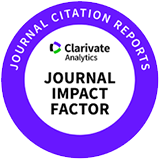Korean Native Black Goat: A Review on its Characteristics and Meat Quality
Received: Oct 22, 2024 ; Revised: Dec 10, 2024 ; Accepted: Dec 10, 2024
Published Online: Dec 27, 2024
Abstract
The Korean native black goat (Capra hircus coreanae, KNBG) is an indigenous breed of Korea, consisting of four registered strains: Jangsu, Tongyeong, Dangjin, and the Gyeongsang National University strain. KNBG meat is highly valued for its health benefits, including low levels of saturated fat and cholesterol, along with high levels of protein, calcium, and iron. It is a rich source of essential amino acids and other bioactive compounds, including L-carnitine, creatine, creatinine, carnosine, and anserine, which contribute significantly to maintaining good health. The increasing popularity of KNBG meat has expanded its culinary applications, including its use in various traditional dishes. Herbs and spices are often employed to further mitigate its distinct aroma and increase consumer appeal. This review highlights the distinctive attributes of KNBG, focusing on its nutritional composition, bioactive compounds, and meat quality. It underscores its potential as a health-promoting food source and explores innovative pathways for product development to address market challenges. Further research is needed to clarify KNBG’s health impacts, ensure the authenticity and integrity of goat meat considering regulatory shifts, and optimize its role as a sustainable, health-promoting food for domestic and global markets.













